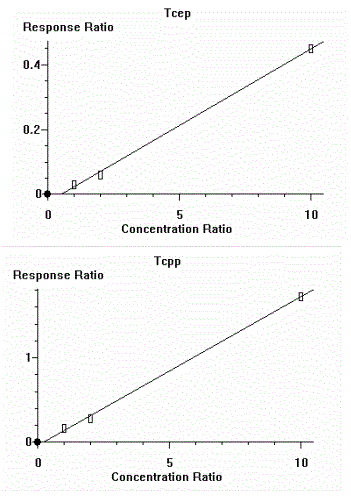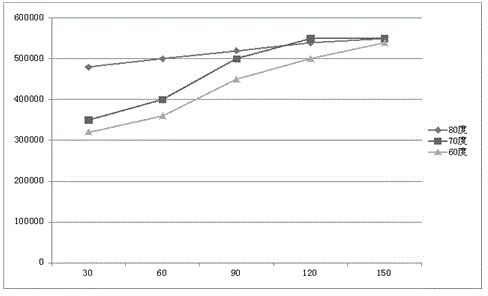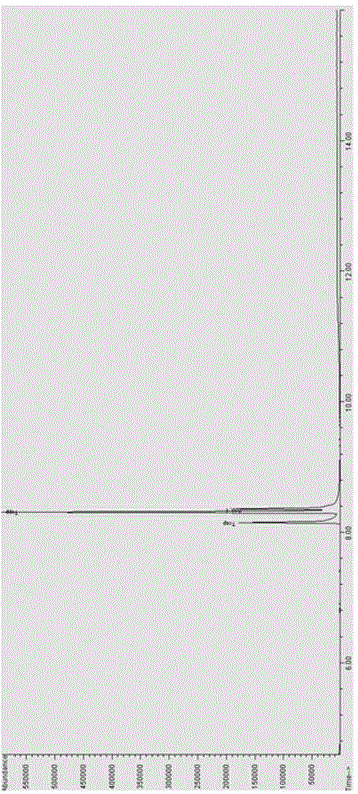Detection method of TCEP and TCPP in textile, leather and plastics
A detection method and textile technology are applied in the field of chemical detection to achieve the effects of high sensitivity, good precision, and simple and fast detection methods.
- Summary
- Abstract
- Description
- Claims
- Application Information
AI Technical Summary
Problems solved by technology
Method used
Image
Examples
Embodiment 1
[0039] A kind of detection method of TCEP and TCPP in textiles, leather and plastic products, adopts gas chromatography-mass spectrometry to detect, comprises the following steps:
[0040] A. Standard solution preparation
[0041] Preparation of TCEP, TCPP and anthracene-D10 standard stock solutions: Weigh a certain amount of TCEP, TCPP and anthracene-D10 standard products, and use AR grade toluene to make volumes in 10mL volumetric flasks respectively to prepare 1000mg / L stock solutions.
[0042] Preparation of TCEP and TCPP standard working solutions: Accurately pipette an appropriate amount of standard stock solution, dilute it with AR grade toluene, and make standard working solutions of 0.5mg / L, 1mg / L, and 5mg / L (the internal standard anthracene-D10 is 0.5mg / L).
[0043] B. Sample pretreatment
[0044]Sampling: Take a representative sample, cut it into a size of about 1mm×1mm, accurately weigh 1.0g (accurate to 0.0001g), and place it in a 40mL glass reaction bottle; ad...
Embodiment 2
[0060] Example 2 The retention times and characteristic fragment ions of the target substances (TCEP and TCPP) in the examples are shown in Table 1. The chromatogram of TCEP and TCPP in the embodiment sees figure 1 , where the abscissa is the retention time, and the ordinate is the signal intensity;
[0061] Table 1 Retention time, characteristic fragment ions and abundance ratio of the target
[0062] Substance name
[0063] From Table 1 and figure 1 It can be seen that under the detection conditions of Example 1, the target objects (TCEP and TCPP) can be well separated.
Embodiment 3
[0064] Embodiment 3 linear relationship
[0065] Under the optimized detection conditions of the present invention, the standard solutions of TCEP and TCPP are detected within the concentration range of 0.5-5 mg / L. Standard working curve see figure 2 ,Depend on figure 2 It can be seen that its concentration has a good linear relationship with the response value, the linear equation: TCEP: Y=0.1758X-0.03933, TCPP: Y=0.04729X-0.02539, the correlation coefficient R 2 = 0.9997.
PUM
 Login to View More
Login to View More Abstract
Description
Claims
Application Information
 Login to View More
Login to View More - R&D
- Intellectual Property
- Life Sciences
- Materials
- Tech Scout
- Unparalleled Data Quality
- Higher Quality Content
- 60% Fewer Hallucinations
Browse by: Latest US Patents, China's latest patents, Technical Efficacy Thesaurus, Application Domain, Technology Topic, Popular Technical Reports.
© 2025 PatSnap. All rights reserved.Legal|Privacy policy|Modern Slavery Act Transparency Statement|Sitemap|About US| Contact US: help@patsnap.com



